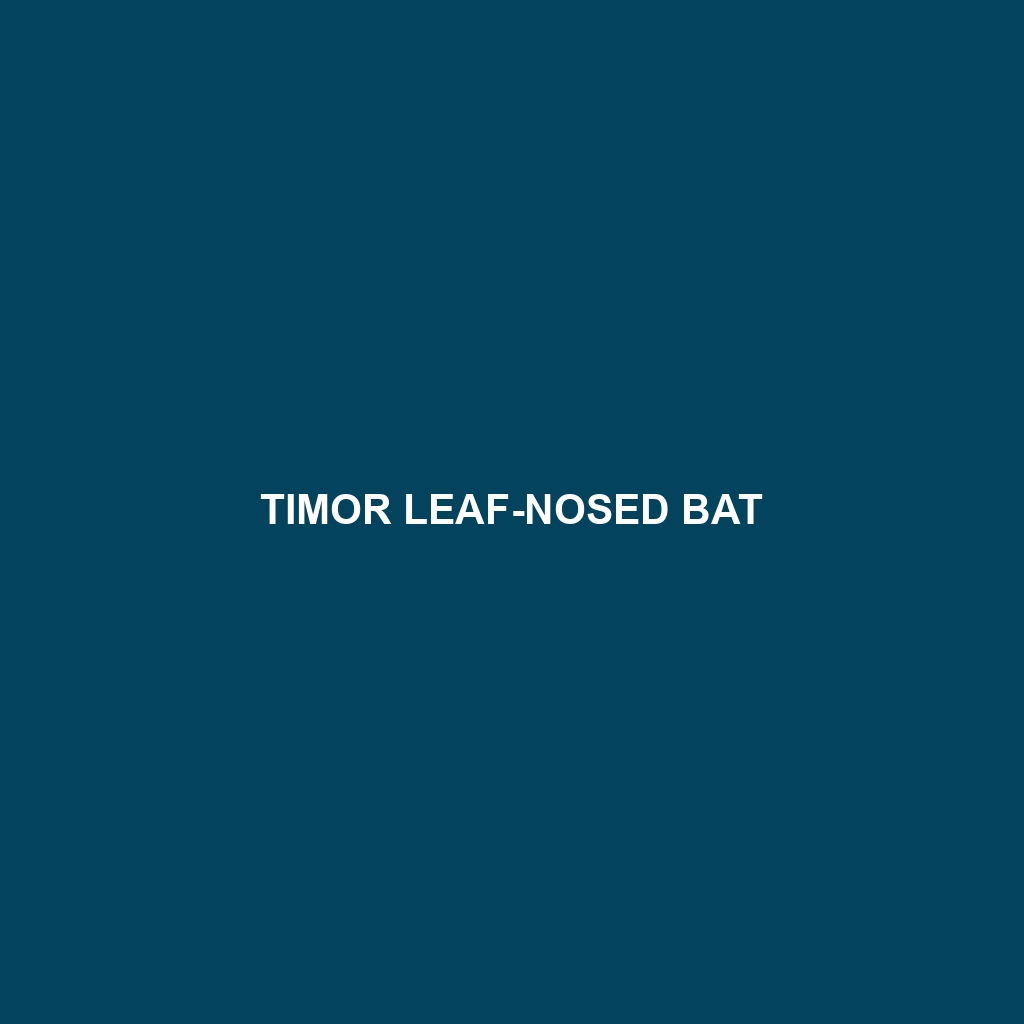Timor Leaf-nosed Bat
Common Name: Timor Leaf-nosed Bat
Scientific Name: Hipposideros ariel
Habitat
Habitat: The Timor Leaf-nosed Bat is primarily found on the islands of Timor and surrounding regions, including areas of Indonesia and East Timor. These bats thrive in tropical and subtropical forests, particularly favoring limestone caves, where they roost and seek shelter. Their preferred habitat includes lush vegetation and proximity to water sources, which supports their foraging activities.
Physical Characteristics
Physical Characteristics: The Timor Leaf-nosed Bat is a medium-sized bat, with a wingspan of approximately 30 to 35 cm. Its fur is typically a rich brown color, allowing it to blend into its forest surroundings. Notable features include its distinct leaf-like nose structure that assists in echolocation, and large, rounded ears which are crucial for their keen sense of hearing. The bat’s overall body shape is slender, with long wings that enhance its agility in flight.
Behavior
Behavior: The Timor Leaf-nosed Bat exhibits nocturnal behaviors, primarily emerging from their roosts at dusk to forage for food. They are known for their social structures, often residing in small colonies, which enhances their safety from predators. Additionally, their echolocation abilities are advanced, allowing them to navigate through dense vegetation effectively while hunting.
Diet
Diet: The Timor Leaf-nosed Bat primarily feeds on insects, particularly moths and beetles, showcasing its role as a natural pest controller within its ecosystem. Their foraging behavior involves flying low over vegetation to capture their prey using a combination of echolocation and rapid movements. This bat’s dietary habits play a vital role in maintaining the ecological balance of its habitat.
Reproduction
Reproduction: Breeding typically occurs during the warmer months, with female Timor Leaf-nosed Bats giving birth to a single pup, usually in June or July. The young are nursed for several weeks, gradually gaining independence as they mature. Parental care is notable in this species, with mothers often roosting close together for warmth and socialization.
Conservation Status
Conservation Status: The Timor Leaf-nosed Bat is currently classified as vulnerable due to habitat destruction and human encroachment. Conservation efforts are essential to protect their natural habitats and promote populations, as these bats face threats from deforestation and climate change, which impact their roosting sites.
Interesting Facts
Interesting Facts: One fascinating aspect of the Timor Leaf-nosed Bat is its unique nasal structures, which are not only functional for echolocation but also contribute to its distinctive appearance. Additionally, this species is known for its high adaptability to various habitats, allowing it to thrive in differing environmental conditions.
Role in Ecosystem
Role in Ecosystem: The Timor Leaf-nosed Bat plays a crucial role in its ecosystem as both a pollinator and pest controller. By consuming large quantities of insects, it helps regulate insect populations, preventing outbreaks that could harm vegetation. Furthermore, their foraging activities aid in seed dispersal, contributing to the biodiversity of their forest habitats.
